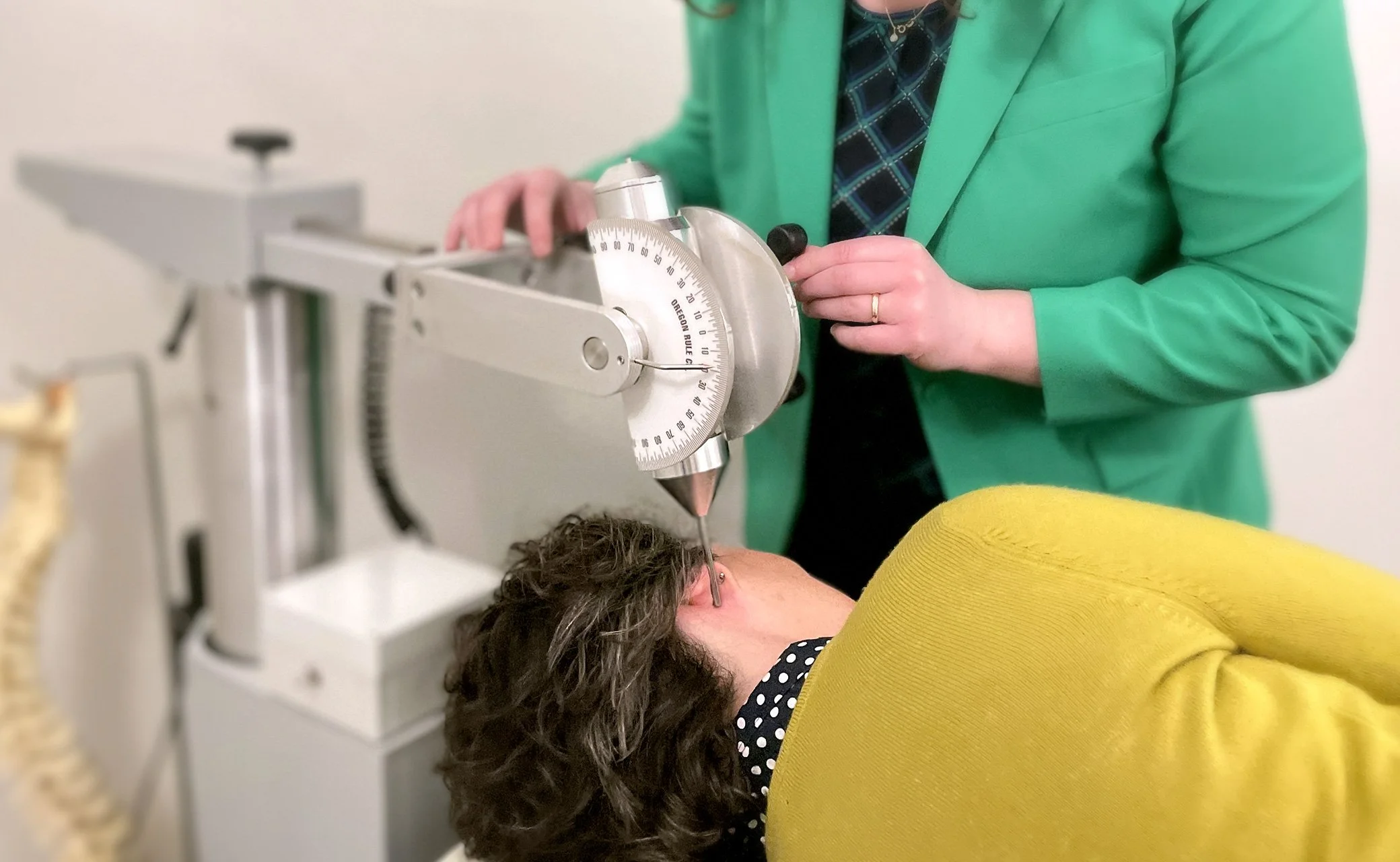
Atlas Orthogonal
What is Atlas Orthogonal?
Atlas Orthogonal Chiropractic is a specialty within the chiropractic field. The Atlas Orthogonal system is a painless and safe spinal correction that restores body balance and reactivates the body's natural healing abilities.
What is an Atlas Orthogonist?
The Atlas Orthogonist is a licensed Doctor of Chiropractic who, in addition to six or more years of education, utilizes a light force method of specifically adjusting the spine. The Atlas Orthogonist has undergone extensive training specializing in correcting spinal misalignment by using the atlas orthogonal percussion instrument. This method is gentle and effective and requires post graduate training.
The Atlas Orthogonal system is a painless and safe spinal correction which restores body balance and increases the body's natural healing ability. Our clinic uses the Atlas Orthogonal system of health care exclusively to care for our patients. This precision form of upper cervical spinal correction painlessly restores body balance without forceful movements or twisting of the neck or back.
Our doctors are skilled in multiple low force chiropractic adjusting techniques. Techniques include activator, SOT blocking and Thompson Drop Table. Treatment is specific to each patient's needs.
How does Atlas Orthogonal differ from other chiropractic techniques?
One of the most obvious differences is the gentle, painless way in which an Atlas Orthogonist works. No manipulation (twisting or cracking) is ever employed or needed. The Atlas Orthogonist's methods require such light touches to the affected area that patients who may expect a forceful manipulation as part of their treatment find it hard to believe that anything effective has been accomplished. However, their doubts and fears vanish as quickly as their pain and discomfort.
Does treatment hurt?
The Atlas Orthogonal spinal correction is painless and barely felt by the patient. Because of the precise X-ray analysis, a correction can be made without any forceful jerking or twisting movements.
What should I expect from treatment?
After the first Atlas Orthogonal spinal correction, you may experience a variety of changes within your body. These are due to the nervous system responding to the structural correction. Symptoms are a positive sign that healing is taking place. In order to heal, the body must go through different cycles of repair which very often express themselves in some of the following ways:
Alleviation of symptoms
Tiredness or sleepiness
Muscle stiffness/soreness
You should not be concerned if the pain changes or moves to another area of the body. Symptoms may decrease immediately. However, the amount of misalignment and severity of the condition will determine the recovery time. Please make the doctor aware of any and all changes. Remember, pain is a sign that the body is working; any changes can be part of the healing process.
Who can benefit from Atlas Orthogonal?
Atlas Orthogonal spinal corrections can help you and your family resolve pain and suffering and can aid in the healthy growth and development of your children. Precision spinal care can eliminate the need for medication and surgery in many cases. After you have experienced the results of Atlas Orthogonal spinal corrections for yourself, tell someone else about your experience, and help us overcome the ignorance, prejudice and superstition about spinal care.
When most people think of chiropractic corrections, they think of neck pain, back pain, or muscle aches. The Atlas Orthogonal spinal correction can help your body work better no matter what type of health problem you may have. Atlas Spinal Care is dedicated to correcting the Atlas Subluxation Complex, which is a misalignment of the bone structure of the head and neck. This misalignment can block the communication between your brain and body, causing pain, stress, and tension. This stress and tension can affect all physical and even mental activity of the body. Many symptoms can be relieved by correction of the Atlas Subluxation Complex. We have had positive results with such conditions as:
Arthritis
Chronic fatigue syndrome
Fibromyalgia
Migraines and other headaches
Asthma
Chronic pain or stress
Athletic injuries
Auto accident injuries
Neck and back pain
Herniated discs
Sciatica
Scoliosis
Carpal tunnel syndrome
Seizures, including Epileptic
Leg and arm numbness
Sinus problems
Allergies
Dizziness
Bell's Palsy
Horner's Syndrome
Trigeminal Neuralgia

